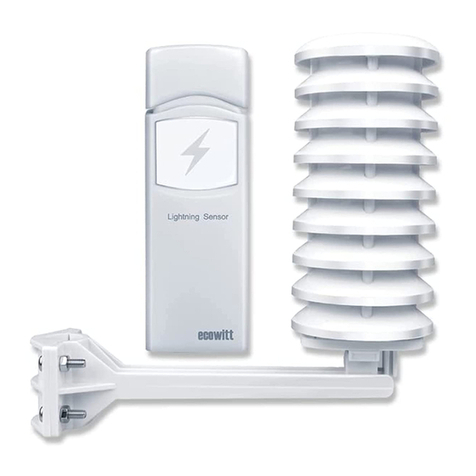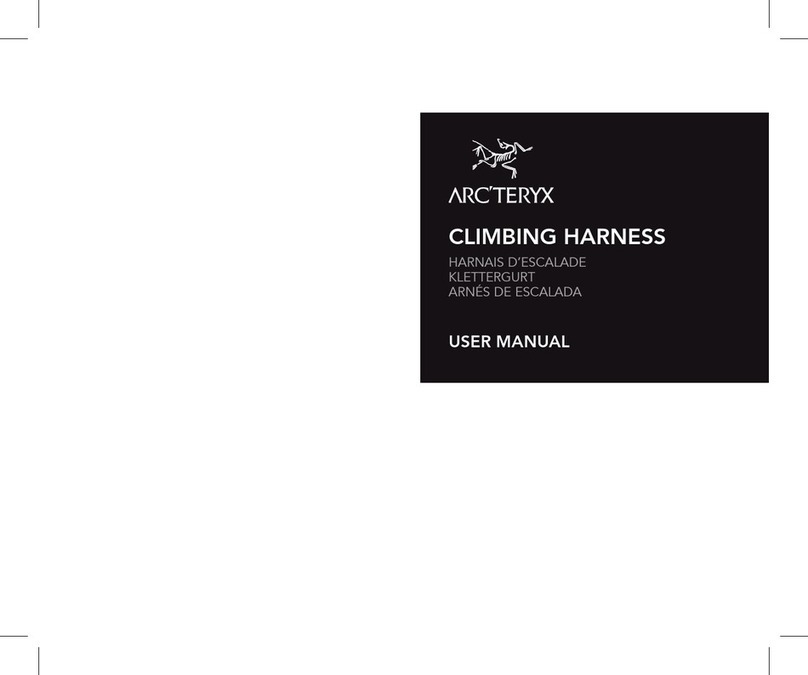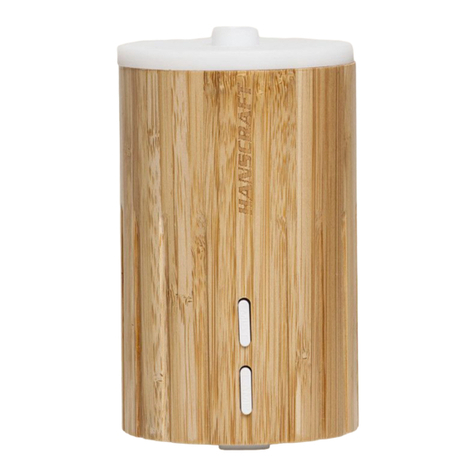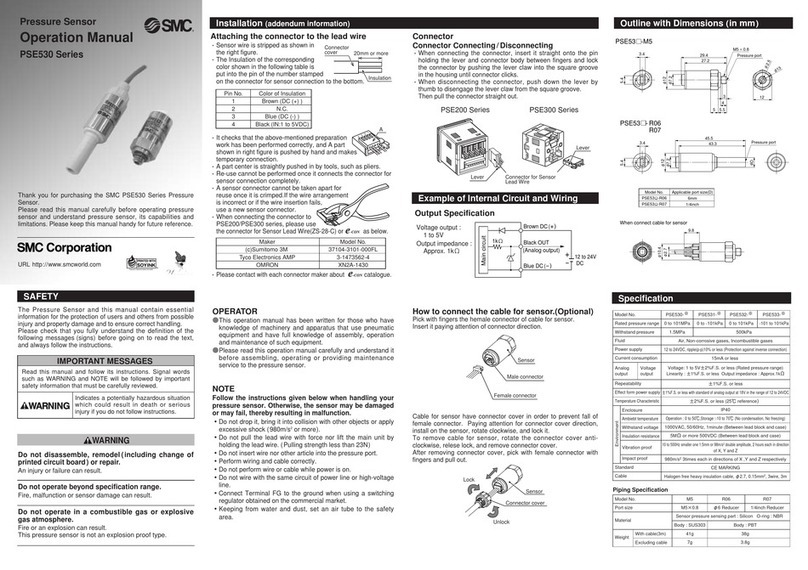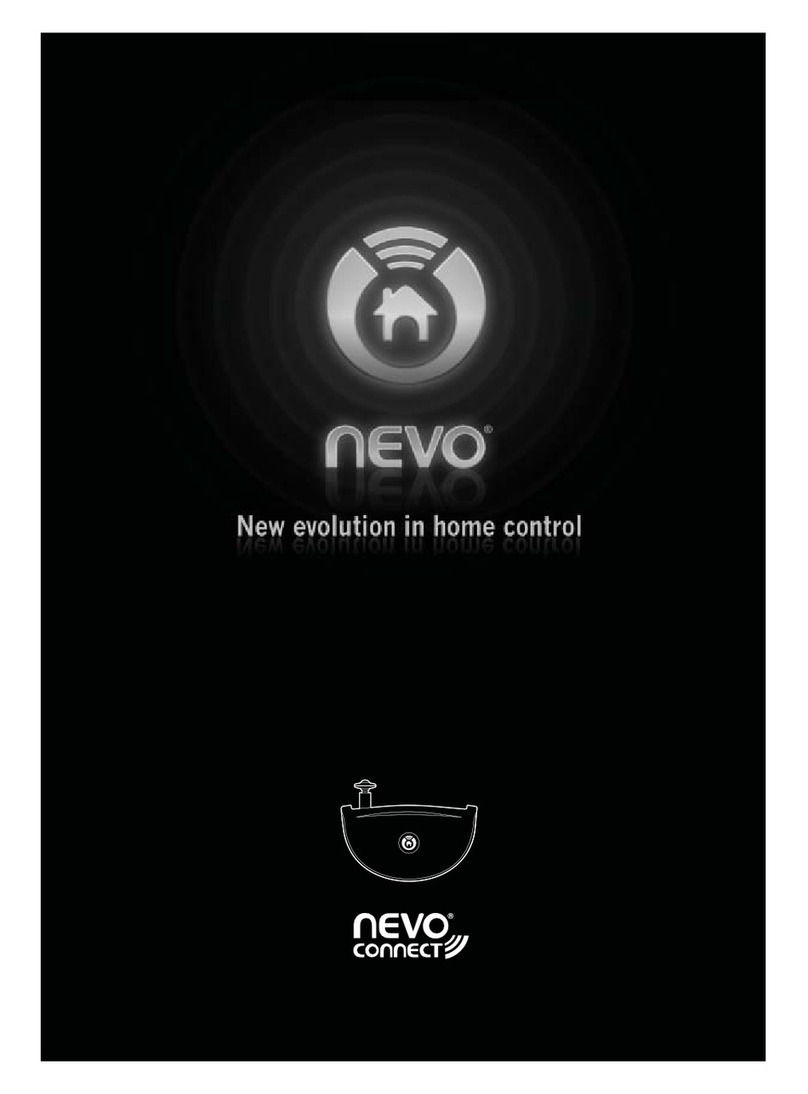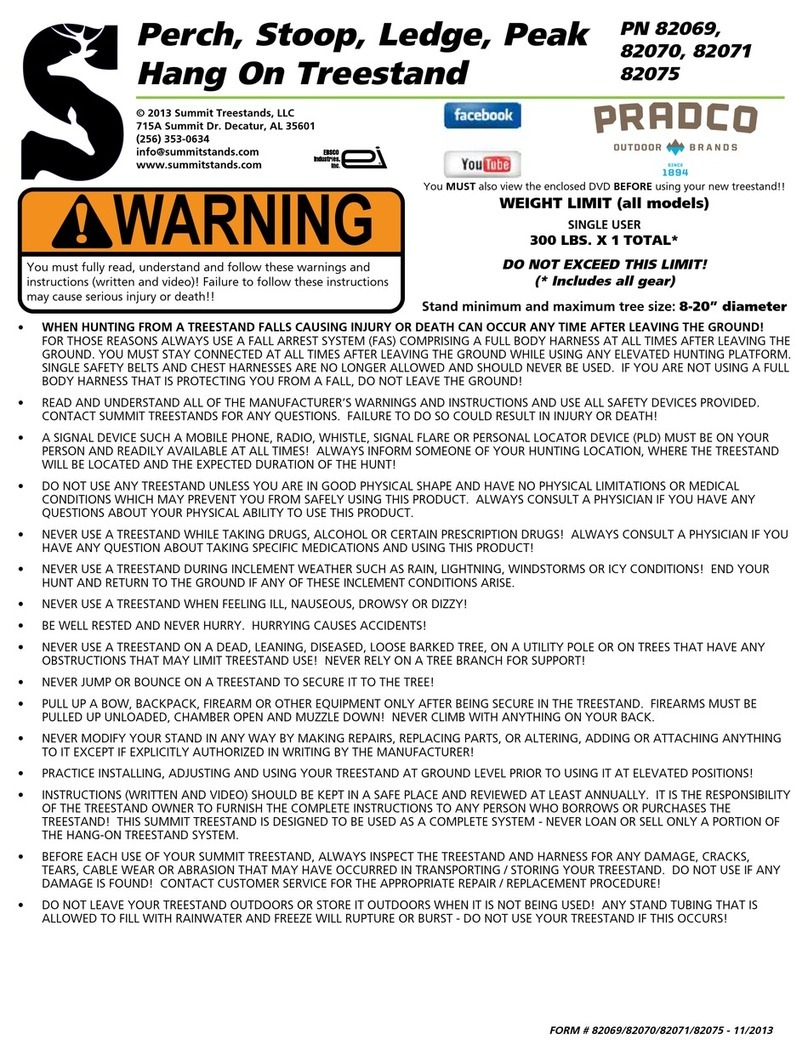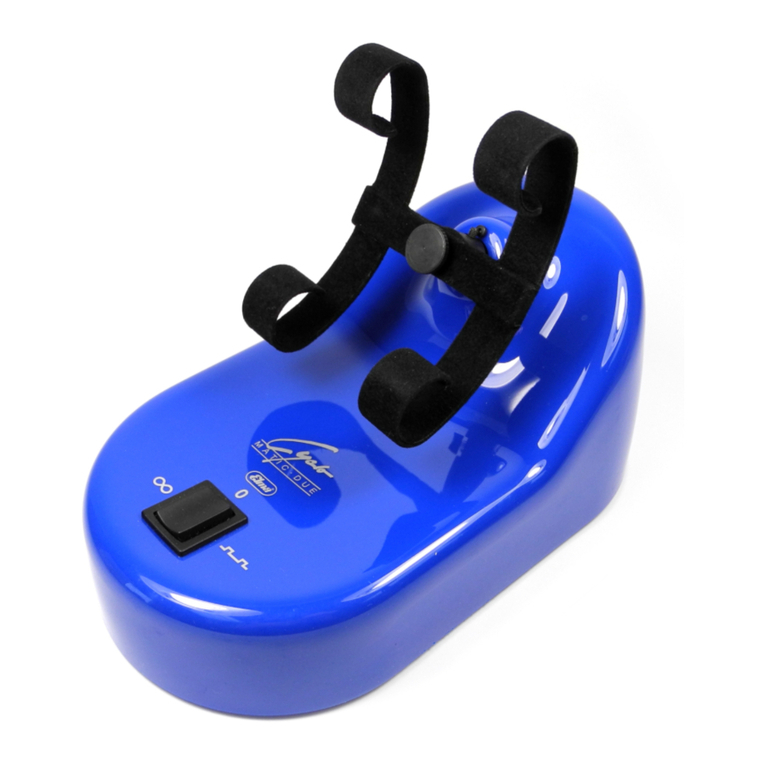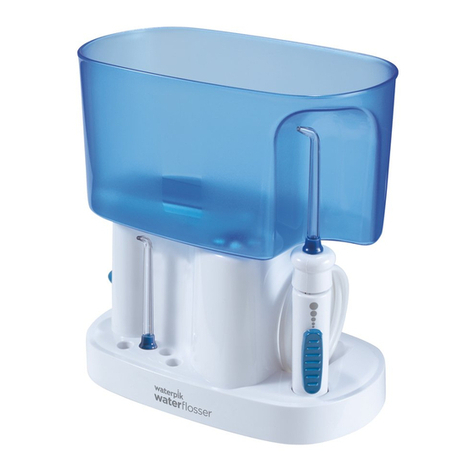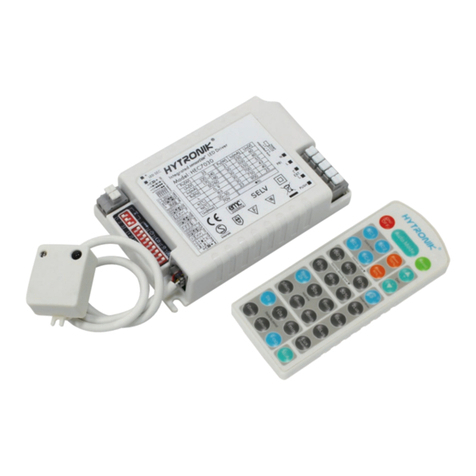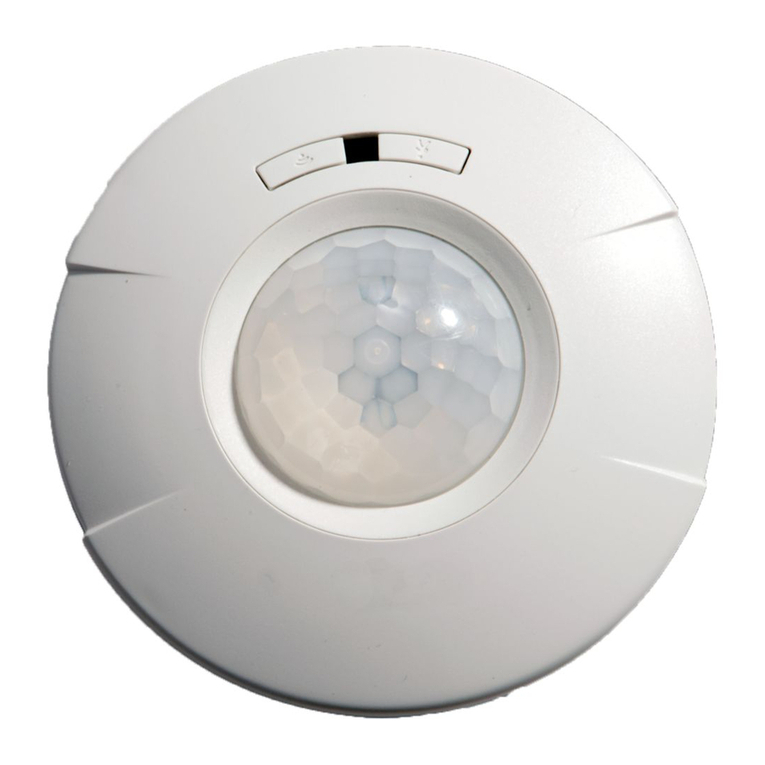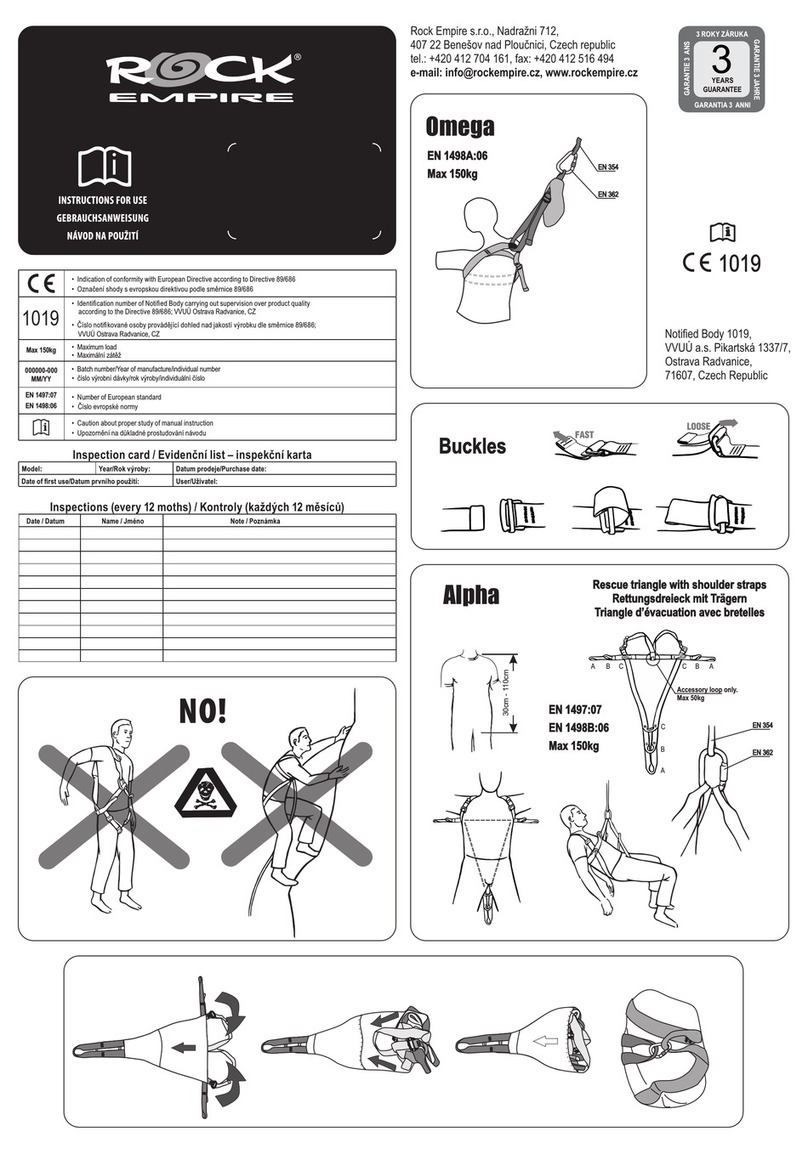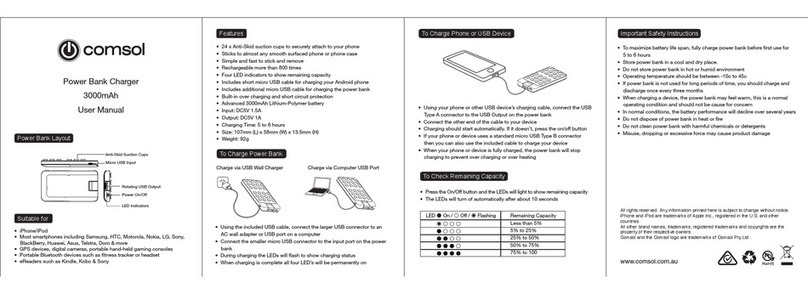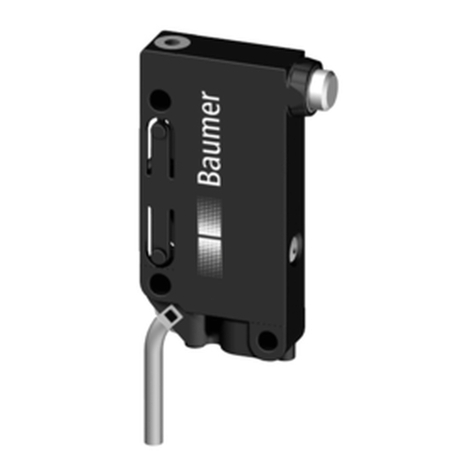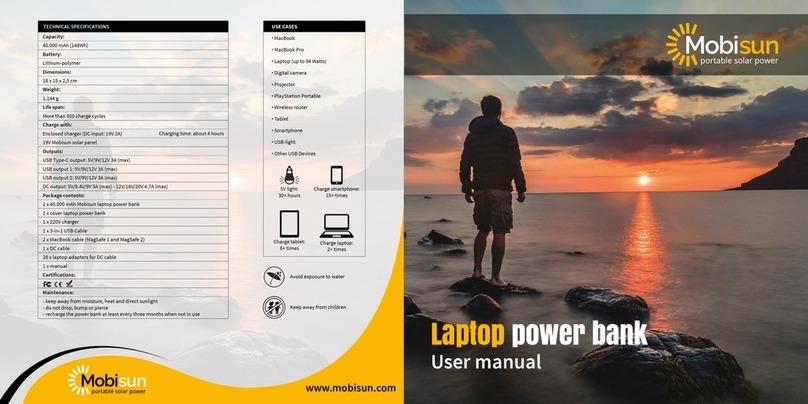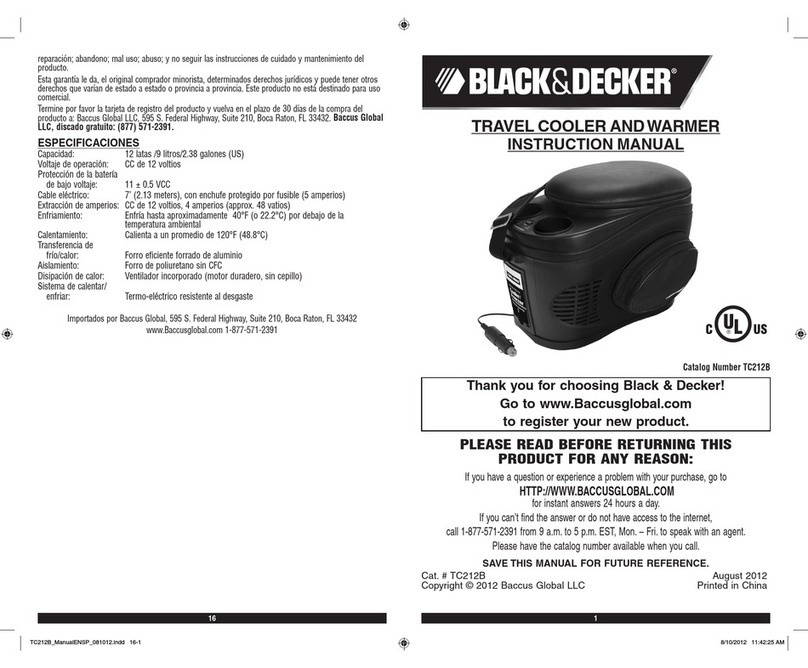METER PHYTOS 31 User manual

PHYTOS 31

i
TABLE OF CONTENTS
1. Introduction..............................................................................................1
2. Operation ...................................................................................................2
2.1 Installation ................................................................................................2
2.2 Connecting................................................................................................. 3
2.2.1 Connect to METER Data Logger........................................................ 4
2.2.2 Connect to a Non-METER Data Logger.............................................4
2.3 Interpreting Data ....................................................................................... 6
2.3.1 Understanding Data from METER Data Loggers...............................6
2.3.2 Understanding Data from Other Data Loggers .................................7
3. System.........................................................................................................9
3.1 Specifications............................................................................................9
3.2 Components ............................................................................................ 10
3.3 Theory...................................................................................................... 11
4. Service....................................................................................................... 12
4.1 Calibration ............................................................................................... 12
4.2 Cleaning and Maintenance....................................................................... 12
4.3 Troubleshooting....................................................................................... 12
4.4 Customer Support.................................................................................... 13
4.5 Terms and Conditions .............................................................................. 14
Index ................................................................................................................. 15
10386-06
10.4.2019


1
1. INTRODUCTION
Thank you for choosing the PHYTOS 31 Leaf Wetness Sensor from METER Group.
The PHYTOS 31 measures leaf surface wetness by measuring the dielectric constant
of the sensor’s upper surface (Section3.3). It has a very low power requirement, which
allows for many measurements over a long period of time with minimal battery usage. This
sensor also has very high resolution, which detects very small amounts of water (or ice).
The PHYTOS31 does not need to be painted before use, eliminating the need for individual
sensor calibration.
Prior to use, verify the PHYTOS 31 arrived in good condition.

2
OPERATION
2. OPERATION
Please read all instructions before operating the PHYTOS 31 to ensure it performs to its
fullpotential.
PRECAUTIONS
METER instruments are built to the highest standards, but misuse, improper protection,
or improper installation may damage the sensor and possibly void the manufacturer’s
warranty. Before integrating PHYTOS 31 into a system, make sure to follow the recommended
installation instructions and have the proper protections in place to safeguard sensors from
damage.
2.1 INSTALLATION
The PHYTOS 31 is designed to be deployed either in the canopy or on weather station masts.
Follow the steps listed in Table 1 to set up the PHYTOS 31 and start collecting data.
Table 1 Installation
Tools Needed Mounting post or other mounting apparatus
Zip ties or 4-40 bolts
Preparation Apply Ultraviolet (UV) Protectant (Section4.2).
Mounting
Install Sensor to Mounting Post
Install the mounting post either in or above the canopy, as needed (Figure1).
Hold the PHYTOS 31 sensor with the electrode traces facing up.
Thread zip ties or 4-40 bolts through the two mounting holes on the sensor
body and attach them to the mounting apparatus at the appropriateheight.
NOTE: Wetness duration will be affected by the mounting angle. Ensure the PHYTOS 31
is mounted at the appropriate angle for the desired measurement. A 45-degree angle is
typical when mimicking plant canopy wetness.
Figure1 PHYTOS 31 installation

3
PHYTOS 31
Table 1 Installation (continued)
Connecting
Select Location for Data Logger and Cable
Connect to Logger
Plug the sensor into the logger.
In ZENTRA Utility, select PHYTOS 31 for the appropriate port.
Use the data logger to make sure the sensor is reading properly.
Verify that these readings are within expected ranges.
Secure and Protect Cables
NOTE: Improperly protected cables can lead to severed cables or disconnected sensors.
Cabling issues can be caused by many factors such as rodent damage, driving over sensor
cables, tripping over cables, not leaving enough cable slack during installation, or poor
sensor wiring connections.
Install cables in conduit or plastic cladding when near the ground to avoid
rodent damage.
Relieve strain on the connections and prevent loose cabling from being
inadvertently snagged by gathering and securing the cables between the
PHYTOS 31 and the data logger to the mounting mast in one or more places.
Tie excess vertical cable to the data logger mast to ensure cable weight does
not cause sensor to unplug.
2.2 CONNECTING
The PHYTOS 31 works seamlessly with METER data loggers. The sensor can also be used
with other data loggers, such as those from Campbell Scientific, Inc.
The PHYTOS 31 sensor requires excitation voltages in the range of 2.5 to 5.0 VDC and
outputs a single-ended DC voltage that is proportional to the amount of water on the
sensor surface.
PHYTOS 31 produces an output voltage that depends on the dielectric constant of the
medium surrounding the sensor and ranges between 10% to 50% of the excitation
voltage. Any data logger that can produce a 2.5- to 5.0-V excitation with approximately
10-ms duration and read a voltage-level signal with 12-bit or better resolution should be
compatible with the PHYTOS 31. The current requirement at 2.5 V is around 2 mA and the
requirement at 5 V is 7 to 8 mA.
NOTE: The PHYTOS 31 is intended only for use with data loggers and readout devices that can provide short excitation
pulses, leaving the sensor turned off most of the time.Continuous excitation not only wastes battery power, but may,
under certain circumstances, cause the sensor to exceed government-specified limits on electromagnetic emissions.
PHYTOS 31 sensors come with a 3.5-mm stereo plug connector (Figure2) to facilitate easy
connection with METER loggers. PHYTOS 31 sensors may be ordered with stripped and
tinned wires to facilitate connecting to some third-party loggers (Section2.2.2).

4
OPERATION
Ground
Analog output
Power
Figure2 Stereo plug connector
The PHYTOS 31 comes standard with a 5-m cable. It may be purchased with custom cable
lengths for an additional fee (on a per-meter basis). Cable length can be increased up to 40 m
without significant signal attenuation.
2.2.1 CONNECT TO METER DATA LOGGER
The PHYTOS 31 works most efficiently with METER ZENTRA, EM60, or Em50 series data
loggers. Check the METER download webpage for the most recent data logger firmware.
Logger configuration may be done using either ZENTRA Utility (desktop and mobile
application) or ZENTRA Cloud (web-based application for cell-enabled data loggers).
1. Plug the stereo plug connector into one of the sensor ports on the logger.
2. Use the appropriate software application to configure the chosen logger port for the
PHYTOS31.
3. Set the measurement interval.
PHYTOS 31 data can be downloaded from these loggers using either ZENTRA Utility or
ZENTRA Cloud. Refer to the logger user manual for more information about these programs.
2.2.2 CONNECT TO A NONMETER DATA LOGGER
The PHYTOS 31 can be used with non-METER (third-party) data loggers. Refer to the third-
party logger manual for details on single-ended voltage measurements, power supply, and
ground ports. Non-METER data loggers may require programming to read the PHYTOS 31.
METER has a sample program for interfacing with Campbell Scientific, Inc. data loggers.
The PHYTOS 31 sensors can be ordered with stripped and tinned (pigtail) wires for use with
screw terminals. Refer to the third-party logger manual for details on wiring.
Connect the PHYTOS 31 wires to the data logger as illustrated in Figure3 and Figure4,with
the power supply wire (brown) connected to the excitation, the analog out wire (orange) to a
single-ended voltage input, and the bare ground wire to ground.

5
PHYTOS 31
Ground (bare)
Analog output (orange)
Power (brown)
Figure3 Pigtail wiring
NOTE: LWS (predecessor to PHYTOS 31) may have the older Decagon wiring scheme where the power supply is white,
the analog is red, and the bare wire is ground.
Excitation H
Analog in
Data Logger
GroundL
Power
(brown)
Analog output
(orange)
Ground
(bare)
Figure4 Wiring diagram
NOTE: The acceptable range of excitation voltages is from 2.5 to 5.0 VDC.
If the PHYTOS 31 cable has a standard stereo plug connector and needs to be connected to a
non-METER data logger, use one of the following two options.
Option 1
1. Clip off the stereo plug connector on the sensor cable.
2. Strip and tin the wires.
3. Wire it directly into the data logger.
This option has the advantage of creating a direct connection and minimizes the chance of
the sensor becoming unplugged. However, it then cannot be easily used in the future with a
METER readout unit or data logger.
Option 2
Obtain an adapter cable from METER.
The adapter cable has a connector for the stereo plug connector on one end and three wires
(or pigtail adapter) for connection to a data logger on the other end. The stripped and tinned
adapter cable wires have the same termination as in Figure4: the brown wire is excitation,
the orange is output, and the bare wire is ground.
NOTE: Secure the stereo plug connector to the pigtail adapter connections using adhesive-line heat shrink to ensure
the sensor does not become disconnected during use.

6
OPERATION
2.3 INTERPRETING DATA
Most leaf wetness applications (disease forecasting, etc.) only require knowledge if there
is any water on the surface of the leaf, not knowledge of the amount of water. To make this
determination, a sensor output threshold corresponding to the minimum wet state must be
identified.
A dry PHYTOS 31 outputs approximately 435 raw counts when read with METER data
loggers. When the sensor is totally wet, as in a heavy rain, the signal can range up to around
1,100 counts. Varying amounts of water on the surface of the sensor cause a sensor output
proportional to the amount of water on the sensor's surface. Ice has a much lower dielectric
constant than that of liquid water, so the sensor output from frost is much lower than that
from a similar amount of rain or dew (Figure5).
Figure5 Example raw PHYTOS 31 output
2.3.1 UNDERSTANDING DATA FROM METER DATA LOGGERS
With METER data loggers, users have two options for interpreting data: using number of
minutes wet (processed data) or raw probe output (raw data). The sensors are factory
calibrated to read 435 raw counts when dry. When configuring a METER logger port to read
the PHYTOS 31, the logger reads the sensor every minute and compares the data to two
predefined wetness thresholds of 450 and 460 raw counts to determine the number of
minutes wet during a measurement interval.

7
PHYTOS 31
Three columns of data are output in a Microsoft®Excel®spreadsheet for each
PHYTOS31 port.
• Column 1: The number of minutes that the PHYTOS 31 output was over 450 raw counts in
the preceding wake interval. For example, if a 30-min wake interval is selected, then the
number can range from 0 (the sensor was never wet during the 30-min period) to 30 (the
sensor was always wet during that 30-min period). The sum of the numbers in this column
yields the cumulative wetness duration (in minutes) during the time period of interest.
• Column 2: The number of minutes that the PHYTOS 31 output was over 460 raw counts
in the preceding wake interval. The data in this column follow the same format as
those in column 1, only with a slightly higher wetness threshold. Field tests for the
PHYTOS31 indicate extreme dust buildup or bird droppings can cause the dry output of the
sensor to climb above the 450 raw count threshold. If this occurs, values in column 1 will
be higher than values in column two. The data in column 2 can be used until the sensor can
becleaned.
• Column 3: The final reading in raw counts of the PHYTOS 31 during the wake interval.
For example, if a 30-min wake interval has been chosen, the number in column 3 is the
output in raw counts from the PHYTOS 31 during the last minute of that 30-min period.
This data column can be used in the event of an extremely dirty PHYTOS 31, which may
force the dry output higher than 460 raw counts. In this case, the user can identify a new
wetness threshold from the time series data and calculate wetness duration from the
new threshold until the sensor can be cleaned (Section2.3.2). The data in this column
only gives a wetness reading every wake interval (typically 30 min or more), instead of the
1-min wetness resolution available in column 1 and 2. This column can also be used for
understanding the phase of the water, as shown in Figure5, as well as the amount of water
(as discussed in Predicting the amount of water on the surface of the PHYTOS 31 dielectric
leaf wetness sensor).
Em50 data loggers provide an unprocessed Excel file format with three columns of data for
each PHYTOS 31 port.
• Column 1: The cumulative number of minutes that the PHYTOS 31 output has been over
450 raw counts since the Em50 data were last erased or the accumulator has rolled over.
The accumulator has a maximum of 2,048 min (1.42 days) of wetness. If the cumulative
wetness duration exceeds this window (which likely happens often), then the accumulator
resets to 0 and begins accumulating again.
• Column 2: The cumulative number of minutes that the PHYTOS 31 output has been over
460 raw counts since the Em50 data were last erased or the accumulator has rolled over.
The accumulator rolls over to 0 after 2,048 min of wetness.
• Column 3: The final reading in raw counts of the PHYTOS 31 during the wake interval.
2.3.2 UNDERSTANDING DATA FROM OTHER DATA LOGGERS
With non-METER data loggers, the user needs to establish a wetness threshold for their
system. The dry output of the PHYTOS 31 varies with excitation voltage (note that the
acceptable excitation voltage range is 2.5 to 5.0 V). The PHYTOS 31 dry output is easily

8
OPERATION
determined from time series data such as those presented in Figure5. A wetness threshold
should be chosen that is slightly above the dry output, and subsequent readings should be
compared to the dry output to determine surface wetness. When using a non-METER data
logger, it is important to collect data frequently enough to capture changes in the surface
wetness. A sampling frequency of 15 min or less is often necessary to accurately capture leaf
wetness duration.

9
PHYTOS 31
3. SYSTEM
This section describes the specifications, components, and theory of the PHYTOS 31 Leaf
Wetness Sensor.
3.1 SPECIFICATIONS
PHYSICAL SPECIFICATIONS
Dimensions
Length 12.0 cm (4.7 in)
Width 5.8 cm (2.3 in)
Height 0.8 cm (0.3 in)
Operating Temperature Range
Minimum –40 °C
Typical NA
Maximum +60 °C
NOTE: Sensors may be used at higher temperatures under certain conditions; contactCustomer
Supportfor assistance.
Cable Length
5 m (standard)
40 m (maximum custom cable length)
NOTE: Contact Customer Support if a nonstandard cable length is needed.
Connector Types
3.5-mm stereo plug connector or stripped and tinnedwires
ELECTRICAL AND TIMING CHARACTERISTICS
Supply Voltage
Minimum 2.5 VDC
Typical NA
Maximum 5.0 VDC

10
SYSTEM
Settling Time
10 ms
Output
300−1,250 mV (depends on excitation voltage)
Data Logger Compatibility
Data acquisition systems capable of switched 2.5–5.0 VDC excitation and single-ended
voltage measurement at greater than or equal to 12-bit resolution.
COMPLIANCE
Manufactured under ISO 9001:2015
EM ISO/IEC 17050:2010 (CE Mark)
3.2 COMPONENTS
The PHYTOS 31 measures leaf surface wetness by measuring the dielectric constant of
the sensor's upper surface. It has a very low power requirement, which allows for many
measurements over a long period of time (such as a growing season) with minimal battery
usage. This sensor also has very high resolution, which allows for detection of very small
amounts of water (or ice) on the sensor surface. Water on the sensor surface does not need
to bridge electrical traces to be detected, as is common with resistance-based surface
wetness sensors. This means that the PHYTOS 31 does not need to be painted before use,
which eliminates the need for individual sensor calibration.
Circuitry
Sensing area with electrode traces
Mounting holes
Figure6 PHYTOS 31 sensor

11
PHYTOS 31
3.3 THEORY
The PHYTOS 31 measures the dielectric constant of a zone approximately 1 cm from the
upper surface of the sensor. The dielectric constant of water (80) and ice (5) are much higher
than that of air (1), so the measured dielectric constant strongly depends on the presence of
moisture or frost on the sensor surfaces. The sensor outputs a millivolt signal proportional to
the dielectric of the measurement zone, and therefore proportional to the amount of water or
ice on the senor surface.
The sensor has been specially designed to closely approximate the thermodynamic
properties of a leaf. If the specific heat of a leaf is estimated at 3,750 J/kg
K, the density
is estimated to be 0.95 g/cm3, and the thickness of a typical leaf is 0.4 mm, then the heat
capacity of the leaf is 1,425 J/m2
K. This is closely approximated by the thin (0.65-mm)
fiberglass construction of the PHYTOS 31, which has a heat capacity of 1,480 J/m2
K. By
mimicking the thermodynamic properties of a real leaf, the PHYTOS 31 more closely matches
the wetness state of the canopy.
The sensor has also been engineered to closely match the radiative properties of real leaves.
Healthy leaves generally absorb solar radiation effectively in much of the visible portion of
the spectrum, but selectively reject much of the energy in the near-infrared portion of the
spectrum. The surface coating of the PHYTOS 31 absorbs well in the near-infrared region,
but the white color reflects most of the visible radiation. Spectroradiometer measurements
indicate that the overall radiation balance of the sensor closely matches that of a healthy
leaf. During normal use, prolonged exposure to sunlight can cause some yellowing of the
PHYTOS 31. This is expected and does not affect the sensor function.
The surface coating of the PHYTOS 31 is hydrophobic, similar to a leaf with a hydrophobic
cuticle. The sensor should match the wetness state of these types of leaves well, but may
not match the wetness duration of leaves with plentiful leaf hairs or less waxy cuticles. It is
impossible for any sensor to accurately mimic the properties of all leaves.
The PHYTOS 31 is engineered to be repeatable among units, so that relationships can be
determined between the wetness state of the sensor and the wetness state of various
agricultural or natural plant canopies.

12
SERVICE
4. SERVICE
This section describes the calibration and maintenance of the PHYTOS 31. Troubleshooting
solutions and customer service information are also provided.
4.1 CALIBRATION
Painting and individual sensor calibration is not necessary with the PHYTOS 31.
4.2 CLEANING AND MAINTENANCE
Over time, the accumulation of dust and bird dropping can cause the dry output to rise. The
sensor should be cleaned periodically using a cloth moistened with only water. The sensor
should also be cleaned when elevated dry output is detected.
Adding UV protectant will extend the service life of the PHYTOS 31 and is highly
recommended. The PHYTOS 31 leaf wetness sensor is designed to withstand typical outdoor
radiation and precipitation loads for greater than 2 years. However, application of UV
protectant is strongly recommended and is essential if using the PHYTOS 31 in areas with
unusually high radiation loads. The PHYTOS 31 comes pretreated with UV protectant, but
METER recommends reapplying McNett UV Tech every 45 days. McNett is the only tested and
approved UV blocking system for the PHYTOS 31.
To apply McNett UV Tech:
1. Wipe sensor clean using water and a clean, soft cloth.
2. Spray soft cloth with UV Tech spray.
3. Rub both sides of the sensor surface with wet cloth to apply protectant.
Contact Customer Support for more information.
4.3 TROUBLESHOOTING
Table 2 lists common problems and their solutions. If the problem is not listed or these
solutions do not solve the issue, contact Customer Support.
Table 2 Troubleshooting the PHYTOS 31
Problem Possible Solutions
PHYTOS 31 not responding
Check power to the sensor.
Check sensor cable and stereo plug connector integrity.
Check data logger wiring to ensure brown is power supply, orange is
analog out, and bare is ground.
NOTE: Some LWS sensors may have the older Decagon wiring scheme where
the power supply is white, the analog out is red, and the bare wire is ground.

13
PHYTOS 31
Table 2 Troubleshooting the PHYTOS 31 (continued)
Problem Possible Solutions
Sensor dry reading is
toohigh
Clean the sensor.
Apply UV protectant.
Cable or stereo plug
connector failure
If the stereo plug connector is damaged or needs to be replaced,
contact Customer Support for a replacement connector and
splicekit.
If a cable is damaged, follow these instructions to repair the cable.
4.4 CUSTOMER SUPPORT
NORTH AMERICA
Customer service representatives are available for questions, problems, or feedback Monday
through Friday, 7:00 am to 5:00 pm Pacific time.
Email: support.environment@metergroup.com
sales.environment@metergroup.com
Phone: +1.509.332.5600
Fax: +1.509.332.5158
Website: metergroup.com
EUROPE
Customer service representatives are available for questions, problems, or feedback Monday
through Friday, 8:00 to 17:00 Central European time.
Email: support.europe@metergroup.com
sales.europe@metergroup.com
Phone: +49 89 12 66 52 0
Fax: +49 89 12 66 52 20
Website: metergroup.de
If contacting METER by email, please include the following information:
Name
Address
Phone
Email address
Instrument serial number
Description of the problem
NOTE: For products purchased through a distributor, please contact the distributor directly for assistance.

INDEX
15
INDEX
C
cable length 9
calibration 12
cleaning 12
compliance 10
components 10
connector types 9
customer support
Europe 13–14
North America 13
D
data 6–7
data logger
connecting 3–5
METER logger 4, 6–7
non-METER logger 4–5, 7
requirements 10
E
email 13
I
installation 2–3
location 2
preparation 2
tools required 2
M
maintenance 12, 13
O
operation 11
S
specifications 9–12
electrical and timing 9–10
physical 9
T
terms and conditions 14
theory 11
thermal properties 11
troubleshooting 12–13
U
UV protectant 2, 12, 13
W
wiring 3–5

18207-02
10.4.2019
METER Group, Inc. USA
2365 NE Hopkins Court Pullman, WA 99163
T: +1.509.332.2756 F: +1.509.332.5158
E: info@metergroup.com W: metergroup.com
METER Group AG
Mettlacher Straße 8, 81379 München
T: +49 89 12 66 52 0 F: +49 89 12 66 52 20
E: info.europe@metergroup.com W: metergroup.de
© 2007, 2010, 2012, 2018−2019 All Rights Reserved.

Table of contents
Other METER Accessories manuals
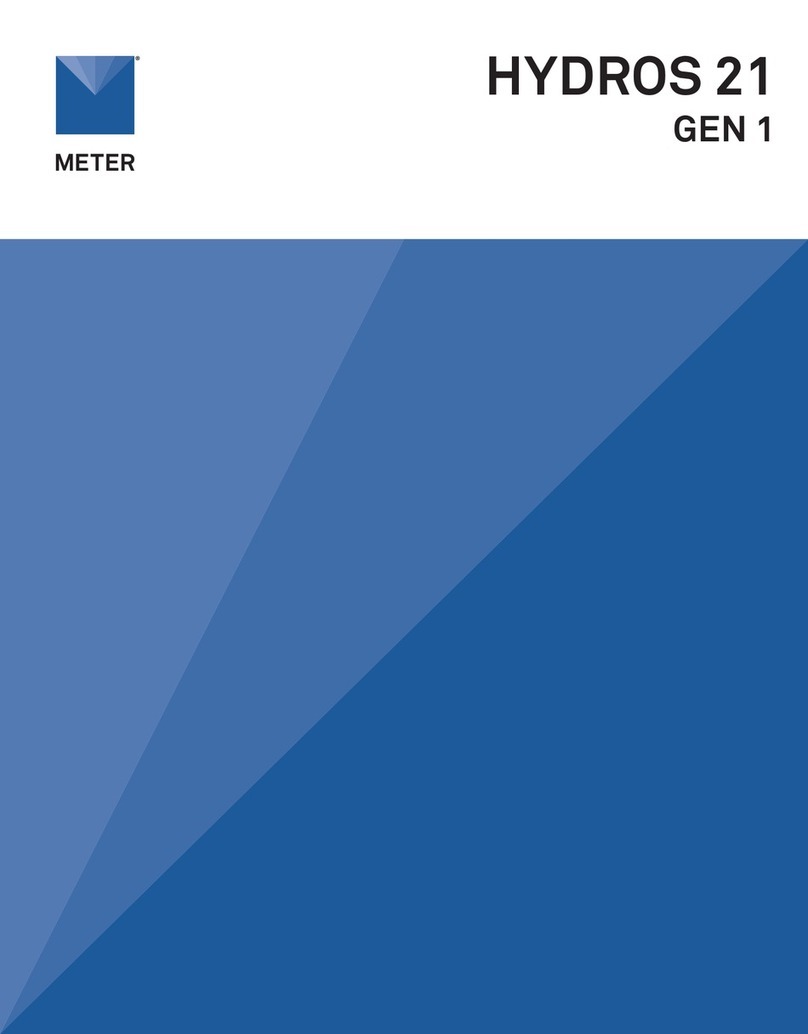
METER
METER HYDROS 21 GEN 1 User manual
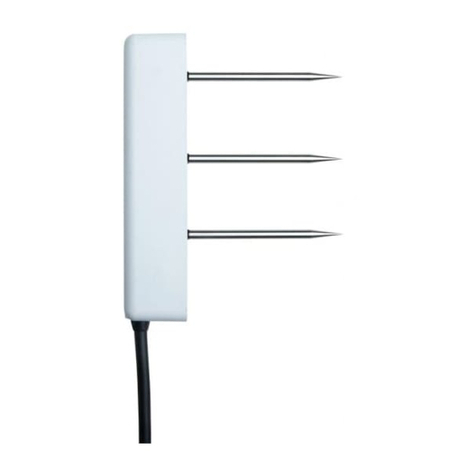
METER
METER TEROS 11 User manual
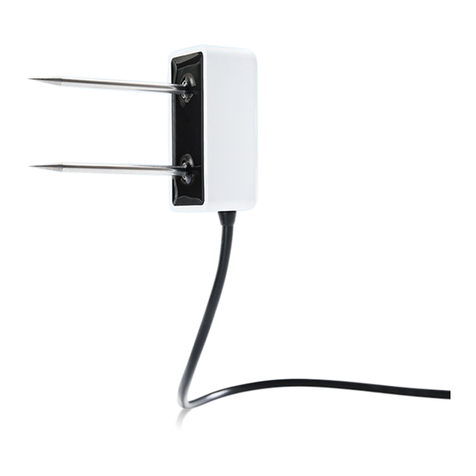
METER
METER TEROS 10 User manual

METER
METER ATMOS 14 User manual
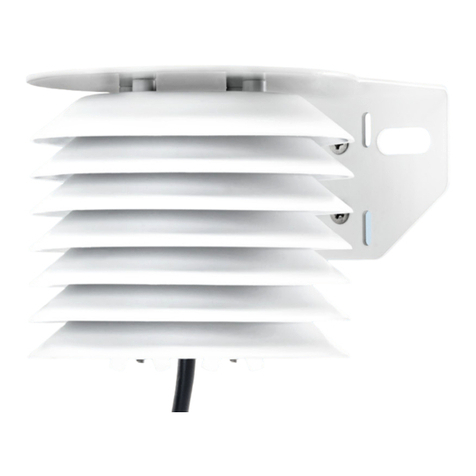
METER
METER ATMOS 14 User manual
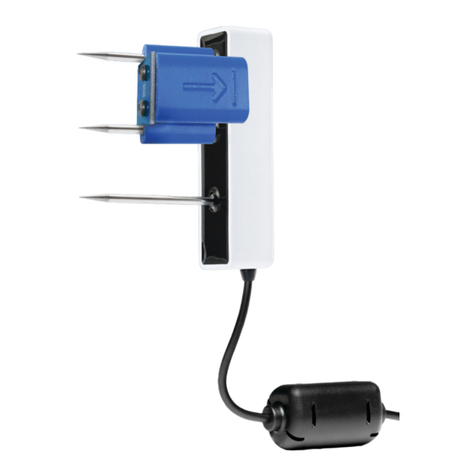
METER
METER TEROS VERIFICATION CLIP User manual

METER
METER TEROS 12 User manual

METER
METER TEROS 10 User manual
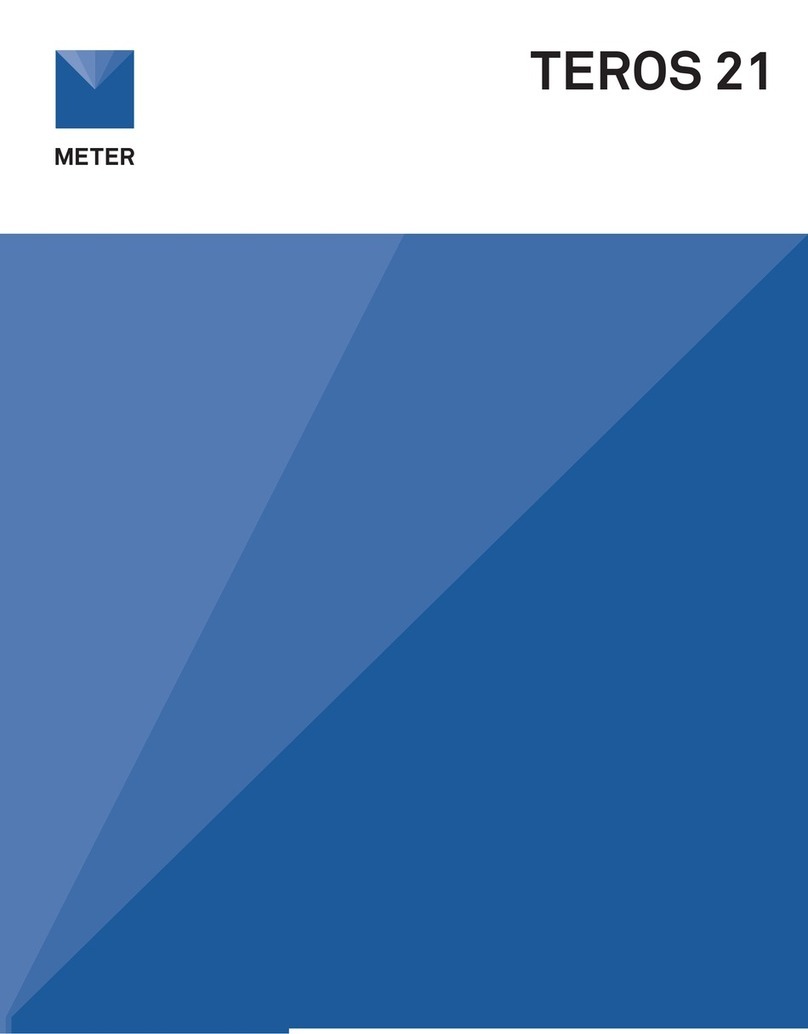
METER
METER TEROS 21 User manual
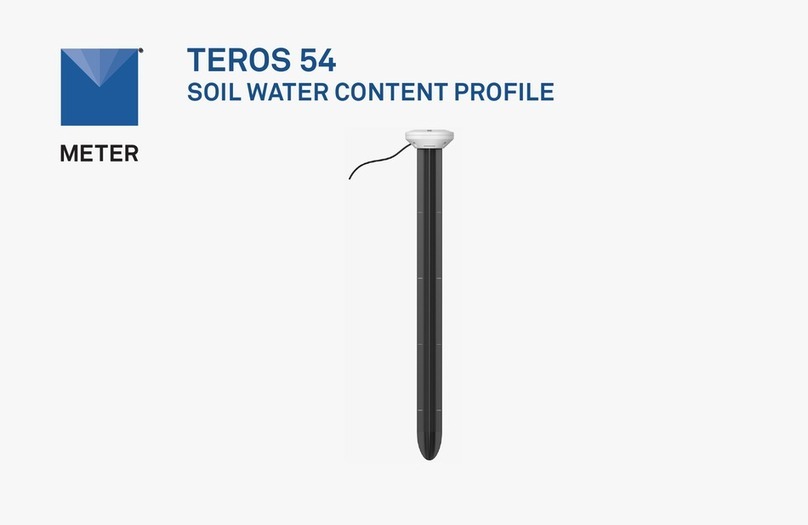
METER
METER TEROS 54 User manual





